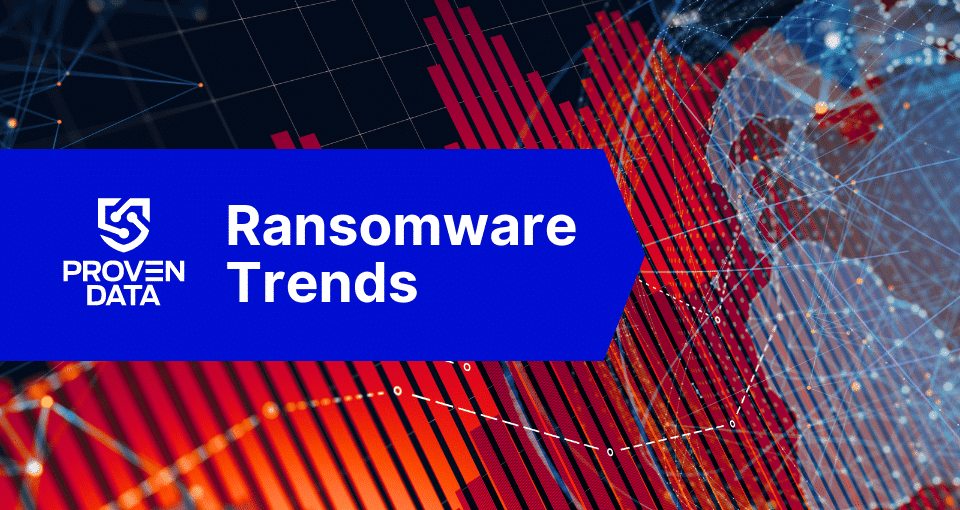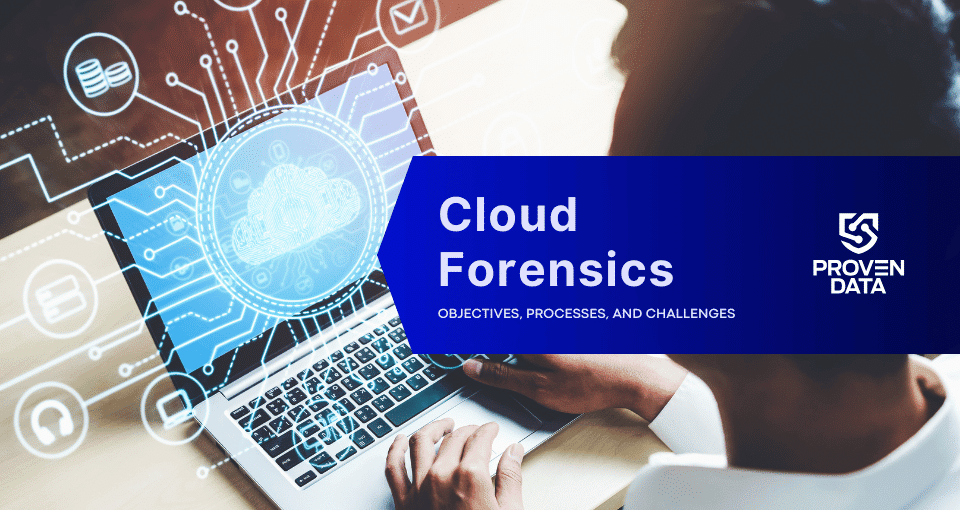Ransomware attacks remain one of the main threats to enterprises and organizations, demanding users and cybersecurity experts alike understand the new attack methodologies to adapt and create efficient prevention and response solutions to ensure data protection.
The year 2023 was characterized by an unprecedented surge in ransomware attacks, with a significant increase in the number of organizations targeted globally. In 2024, ransoms increased by an average of $2.73 million.
The following list brings expert analyses on what businesses, organizations, and individuals should watch for in 2025 to protect themselves from ransomware attacks.
1. Tailored ransomware tactics
In 2024, we saw several data breach cases; some of the largest ones were targeted. They involved tailored attacks, such as phishing emails. The Eldorado ransomware caused several victims and is an example of social engineering tactics and its disruptive impact.
Phishing and social engineering tactics aim to enhance the psychological impact on victims and increase the likelihood of ransom payment. This tendency suggests that threat actors will use stolen data in calculated and personal ways to increase pressure on victims.
How to protect your data from tailored attacks
Adopting a multi-layered security approach that emphasizes vigilance and proactive measures is crucial to protecting your data from tailored attacks.
Start by implementing Zero Trust principles, which ensure that every user and endpoint device is continuously verified before accessing sensitive information.
Regularly update and patch software to close vulnerabilities that attackers may exploit. Utilize advanced threat detection tools powered by artificial intelligence to identify unusual behavior or anomalies within your network.
Additionally, educate employees about the risks of social engineering and phishing attacks, as tailored attacks often rely on manipulating individuals into revealing sensitive information.
2. AI-powered cyber threats
Artificial intelligence (AI) revolutionizes cyber threats by providing attackers with powerful tools for conducting more personalized and sophisticated attacks.
AI-powered threats can analyze vast amounts of data to identify vulnerabilities, personalize phishing attacks, and adapt to defensive measures. Bruce Schneier, a cryptographer and computer security professional, predicts that AI-powered mass spying highlights the potential for AI to play a pivotal role in cyber espionage, enabling attackers to conduct mass surveillance, identify organizational structures, and predict human behavior for malicious purposes.
How to apply AI-powered cybersecurity
Artificial Intelligence (AI) is transforming cybersecurity by providing faster and more adaptive responses to the increasing complexity of cyber threats, moving away from traditional, slower methods. Businesses can leverage AI to strengthen their defenses against online threats by predicting potential attacks based on historical data, automating threat detection with tools like User and Entity Behavior Analytics (UEBA), and ensuring real-time user verification through biometric and contextual data.
However, it’s important to remember that AI systems require proper training to recognize normal network behavior and effectively identify anomalies. Additionally, AI’s ability to process large datasets allows for timely intelligence on vulnerabilities and trends.
3. Shift in ransomware focus and targets
Traditionally, ransomware attacks focused on individuals and small—to medium-sized enterprises (SMEs). However, there has been a notable shift in the landscape, with attackers increasingly targeting larger entities such as corporations, critical infrastructure, and governmental organizations.
Sector-specific ransomware threats have become increasingly prevalent, with specific industries facing heightened risks due to their operational dependencies and sensitive data.
The healthcare sector is particularly vulnerable, as ransomware attacks on hospitals and clinics can disrupt patient care and critical medical operations, potentially leading to life-threatening consequences. Similarly, the manufacturing sector has seen a surge in ransomware incidents as attackers exploit interconnected operational technology (OT) systems to disrupt production processes and extort ransoms.
The financial industry also remains a high-value target due to the wealth of sensitive information it handles. Cybercriminals gain access by employing targeted phishing campaigns and exploiting vulnerabilities in transaction systems.
Sophisticated threat actors now carefully choose targets based on their financial capacity and strategic importance and demand significantly higher ransom amounts.
K-12 school districts have become prime targets for cybercriminals, as highlighted by the U.S. Department of Homeland Security’s 2024 threat assessment report, which labels them as “a near constant ransomware target.” This vulnerability stems from budget constraints and a lack of dedicated cybersecurity resources, making it easier for attackers to exploit system weaknesses through advanced tactics that leverage AI and automated scanning methods.
How to protect your organization from ransomware
Traditional perimeter defenses, such as firewalls and antivirus software, are insufficient against the new sophisticated threats. Government institutions, schools, and healthcare organizations can adopt several cost-effective strategies, such as proactive measures. A simple example is adopting an “assume breach” mindset and implementing zero-trust architectures to enhance internal defenses.
Emphasizing an “assume breach” approach allows these entities to prioritize internal defenses by segmenting networks and encrypting sensitive data, which can be achieved through affordable software solutions.
Implementing Zero Trust principles ensures that access is continuously verified, limiting lateral movement within networks even with minimal resources. Additionally, fostering a culture of cybersecurity awareness among staff through training programs can significantly enhance resilience against attacks.
4. Targeting account recovery methods
Attackers are becoming more strategic in their methods, targeting account recovery mechanisms. Instead of directly attacking user accounts, they exploit weaknesses in the process, which is significantly related to Cross-Site Request Forgery (CSRF).
Account recovery processes inherently involve altering or resetting account credentials, making them susceptible targets for CSRF exploits. Through CSRF, attackers can compel end users to inadvertently execute actions, mirroring the modus operandi of CSRF attacks in manipulating actions such as fund transfers or email address modifications.
How to protect your account recovery
To counteract these threats, organizations must apply security practices, such as regular assessments and collaboration with cybersecurity experts, emphasized for CSRF prevention. These practices ultimately ensure the resilience and security of recovery processes.
5. Rise of mobile and IoT ransomware
Mobile ransomware has become increasingly sophisticated, with cybercriminals exploiting the ubiquity of mobile devices. Recent research reveals a 111% growth in mobile spyware and a 29% increase in banking malware. These attacks often target mobile platforms’ unique vulnerabilities, with many variants capable of bypassing multi-factor authentication. Over 200 malicious apps have been discovered on the Google Play Store, including Anatsa, a banking malware that uses deceptive PDF and QR code readers, to distribute its payload across 650 financial institutions.
Internet of Things (IoT) devices have become prime targets for cybercriminals, with attacks rising 45% yearly. Manufacturing experiences the highest volume of IoT attacks, accounting for 36% of all malware blocks, followed by transportation (14%) and the food and beverage sectors (11%). The United States remains the top target, experiencing 81% of overall IoT attacks. Critically, many IoT systems operate on legacy or end-of-life operating systems, with 50% or more using outdated platforms with known vulnerabilities.
How to protect mobile and IoT devices from ransomware attacks
Organizations and individuals should implement a comprehensive zero-trust security approach to defend against mobile, IoT, and ransomware threats. This includes:
- Comprehensive asset discovery and inventory of all connected devices
- Implementing network segmentation to isolate potentially compromised devices
- Enforcing strict access controls with multi-factor authentication
- Conducting regular security assessments and vulnerability scanning
- Maintaining updated security patches and replacing legacy systems
- Training users on recognizing and preventing potential security threats
6. Initial Access Brokers (IABs)
Initial Access Brokers (IABs) are specialized cybercriminals operating within the cybercrime ecosystem, providing a crucial service that enables attackers to bypass the often time-consuming process of manually infiltrating a network.
IABs utilize various techniques to achieve their goals, including exploiting vulnerabilities in Remote Desktop Protocol (RDP) and Virtual Private Network (VPN) services, conducting social engineering attacks, and leveraging malware to steal credentials. By selling access to compromised systems on dark web forums, IABs facilitate a more efficient attack process for their clients, allowing them to launch ransomware attacks with minimal effort and risk.
The threat posed by IABs is significant, as they streamline the cyberattack process and increase the scale at which ransomware operations can occur. By offloading the initial breach phase to IABs, ransomware groups can focus on executing their attacks more quickly and effectively. This collaboration not only enhances the capabilities of ransomware operators but also makes it challenging for organizations to defend against such threats.
Is it possible to defend against IABs?
Yes, you can protect your business from IAB. To protect businesses from the threats posed by Initial Access Brokers, organizations should adopt a multi-faceted cybersecurity strategy focused on reducing their attack surface and hardening entry points. This includes conducting regular vulnerability assessments and penetration testing to identify and remediate weaknesses in their systems. Implementing strong access controls, such as multi-factor authentication (MFA) and the principle of least privilege, can help limit unauthorized access to sensitive resources.
Additionally, organizations should ensure that all software and systems are updated with security patches to mitigate vulnerabilities that IABs might exploit. Training employees on cybersecurity best practices can also enhance overall awareness and reduce the likelihood of successful social engineering attacks.
How to prevent and respond to ransomware in 2025
Preventing and responding to ransomware attacks in 2025 requires a proactive and multi-faceted approach. Organizations should implement robust cybersecurity measures, including the deployment of advanced threat detection systems powered by artificial intelligence (AI) and machine learning (ML). These technologies can swiftly identify and mitigate evolving ransomware threats, offering unparalleled opportunities to enhance the speed and accuracy of anomaly detection.
Organizations are encouraged to leverage the expertise of cybersecurity consulting services for comprehensive protection against ransomware threats and tailored cybersecurity solutions.
Proven Data offers customizable Incident Response Retainers (IRR) for rapid ransomware response, a pre-arranged agreement that guarantees immediate access to our cybersecurity experts during a ransomware attack.







